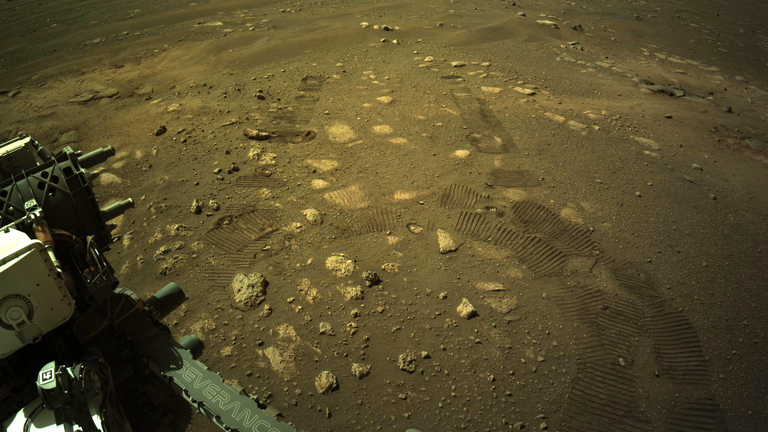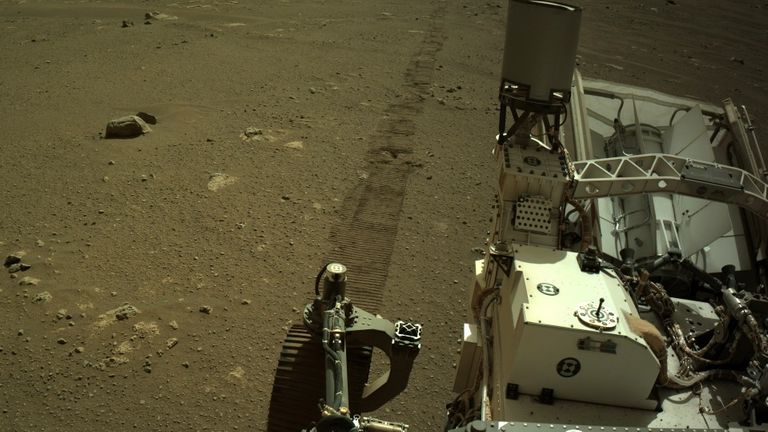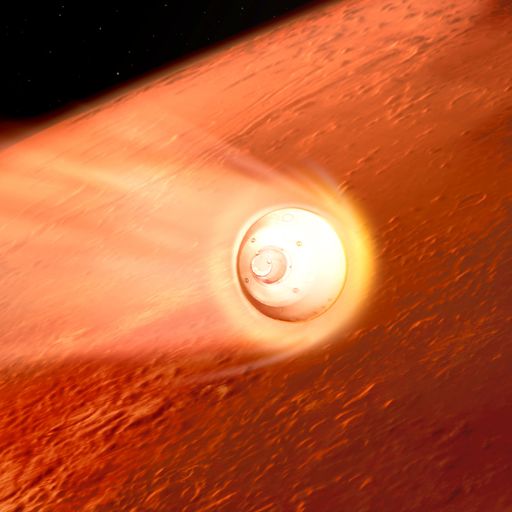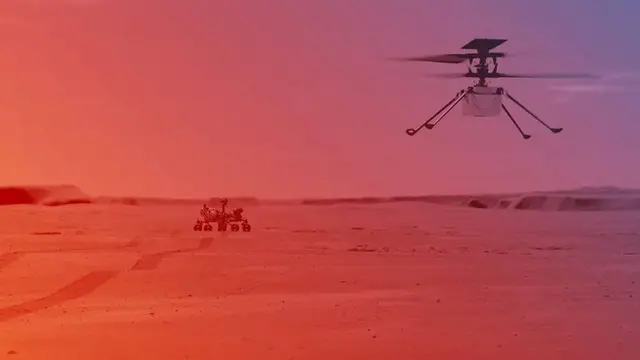NASA has announced the earliest date it hopes its Ingenuity Mars helicopter will be able to make its first attempt at a controlled flight of an aircraft on another planet.
Ingenuity has been attached to the underside of the Perseverance rover since it landed on the planet on 18 February.
On Sunday the rover removed the shield which had protected the helicopter during landing and it is now in transit to an area designated as an "airfield" where Ingenuity will attempt its first flight.

Image:'This really is the surface of an alien world,' said an engineer after Perseverance's dramatic touchdown last month. Pic: NASA
NASA said it is aiming for the flight to take place "no earlier than April 8".
Once the mission has begun, the team will have 30 Martian days, or sols, to complete the flight.
"As with everything with the helicopter, this type of deployment has never been done before," said Farah Alibay, Mars Helicopter integration lead for the Perseverance rover.
"Once we start the deployment there is no turning back. All activities are closely coordinated, irreversible, and dependent on each other.
"If there is even a hint that something isn't going as expected, we may decide to hold off for a sol or more until we have a better idea of what is going on."
If everything goes to plan with the helicopter detaching and moving away from the rover then the device will be ready for lift off.
Please use Chrome browser for a more accessible video player

What driving on Mars sounds like
The tiny helicopter, which weighs just 1.8kg, will hover at 3m (10ft) above the surface for around 30 seconds before descending and touching back down.
Perseverance will then download the data taken by the helicopter and the team will be able to conclude whether the flight has been a success or not.
The Ingenuity mission is not without its challenges.

Could NASA robot prove life on Red Planet?
NASA said flying in a controlled manner on the Red Planet is much more difficult than on Earth.
It does have a significant amount of gravity but its atmosphere is just 1% as dense as Earth's at the surface.
It also receives only half of the solar energy of Earth and night-time temperatures can drop to as low as -90C (-130F) which can damage electrical components.
**Subscribe to the Daily podcast on **
Apple Podcasts
**, Google Podcasts
, Spotify
, Spreaker
**
"Every step we have taken since this journey began six years ago has been uncharted territory in the history of aircraft," said Bob Balaram, Mars helicopter chief engineer at NASA's Jet Propulsion Laboratory in California.
"And while getting deployed to the surface will be a big challenge, surviving that first night on Mars alone, without the rover protecting it and keeping it powered, will be an even bigger one."
 简体中文
简体中文

